We Go Behind the Scenes with Buick to See How Its New Identity Was Born
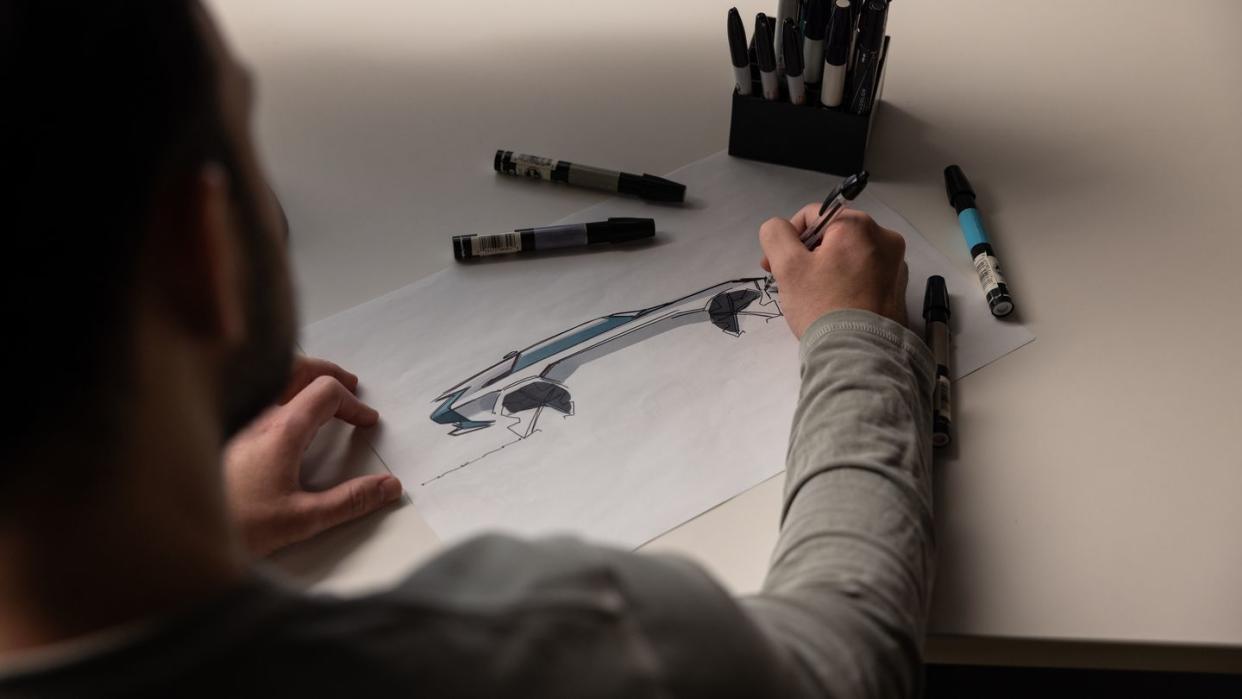
The Buick Envista made a splash when it arrived last year. While the turbocharged three-cylinder is sluggish, the Envista's sleek roofline and refined details have proven popular, with sales continuing to rise as it logged nearly 10,000 units in the first quarter of 2024. The Envista also promises to kick off a design revolution for Buick as the first clean-sheet vehicle using the design language introduced by the flashy Wildcat EV concept. We recently attended General Motor's new Design West facility, which opened last fall, getting a peek inside the Buick studio and a behind-the-scenes look at the design process and how Buick's new style came to be.
It may seem old-fashioned, but the design process still begins with a sketch. Bob Boniface, Buick's global design director, told us his team has a weekly sketch review, which he described as "lighthearted" and "the best meeting of the week." This get together is less focused on production vehicles and more on letting the imaginations of the team run wild. It allows the artists to pitch unorthodox designs and push boundaries, which Boniface says "reminds us why we do this."
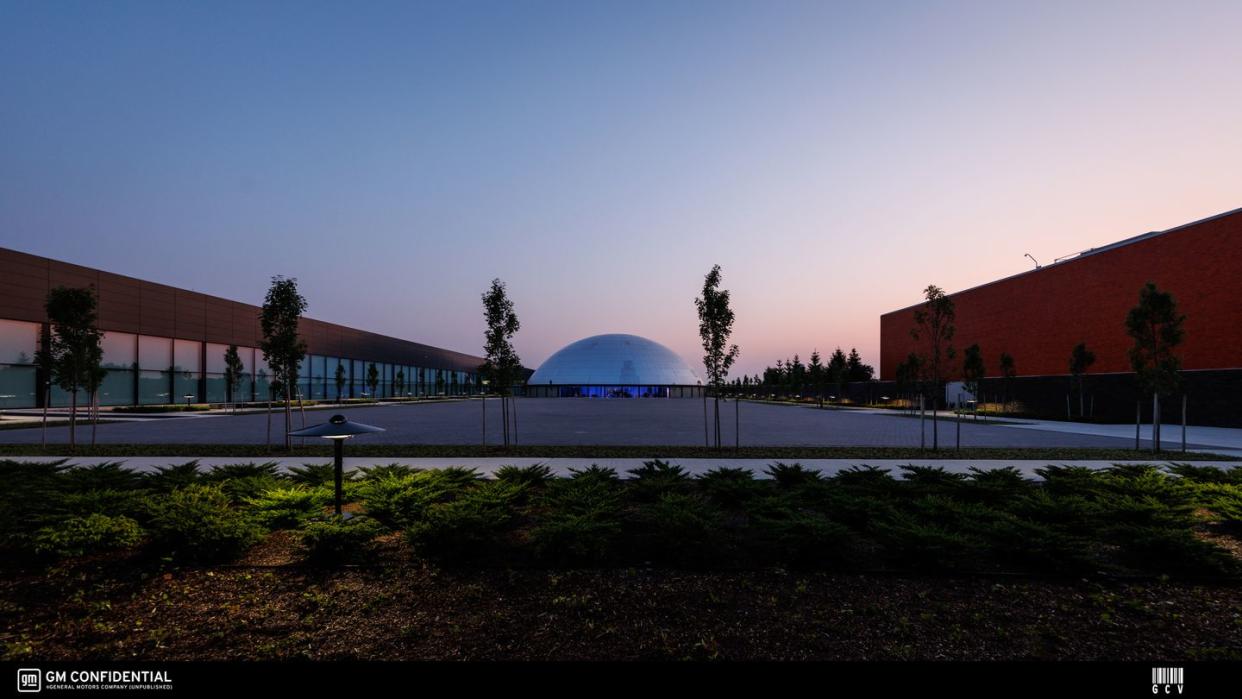
This is also where a brand-wide design language begins taking shape. During a sketch review in late 2018, Boniface asked his team to pen the face of a vehicle "without any shackles." The freedom to explore worked—one young designer's sketch caught Boniface's eye, a dramatic yet elegant look that he thought could transform the face of the brand and translate across the lineup. The team further honed this theme, transitioning it from sketches to clay models.
This is usually the next step in the process, with the small-scale models crafted by hand by a team of skilled artisans. We saw a few clay vehicles on our visit to the studio, each constructed as half of a vehicle positioned against a mirror. This gives a sense of what the full thing would look like while saving the sculptors the time and hassle of shaping the entire vehicle. Above each hung a sketch, providing the inspiration for the model below.
While computers play a huge role in the design process, "there’s still no substitute to seeing and touching a vehicle," Boniface said. General Motor's senior vice president of global design, Michael Simcoe, visited the Buick studio one day in 2019 after the team had transferred the initial sketches of Buick's new design language to clay form. The model of what ended up as the Wildcat EV concept stopped Simcoe in his tracks, and he encouraged Boniface to explore the theme further.
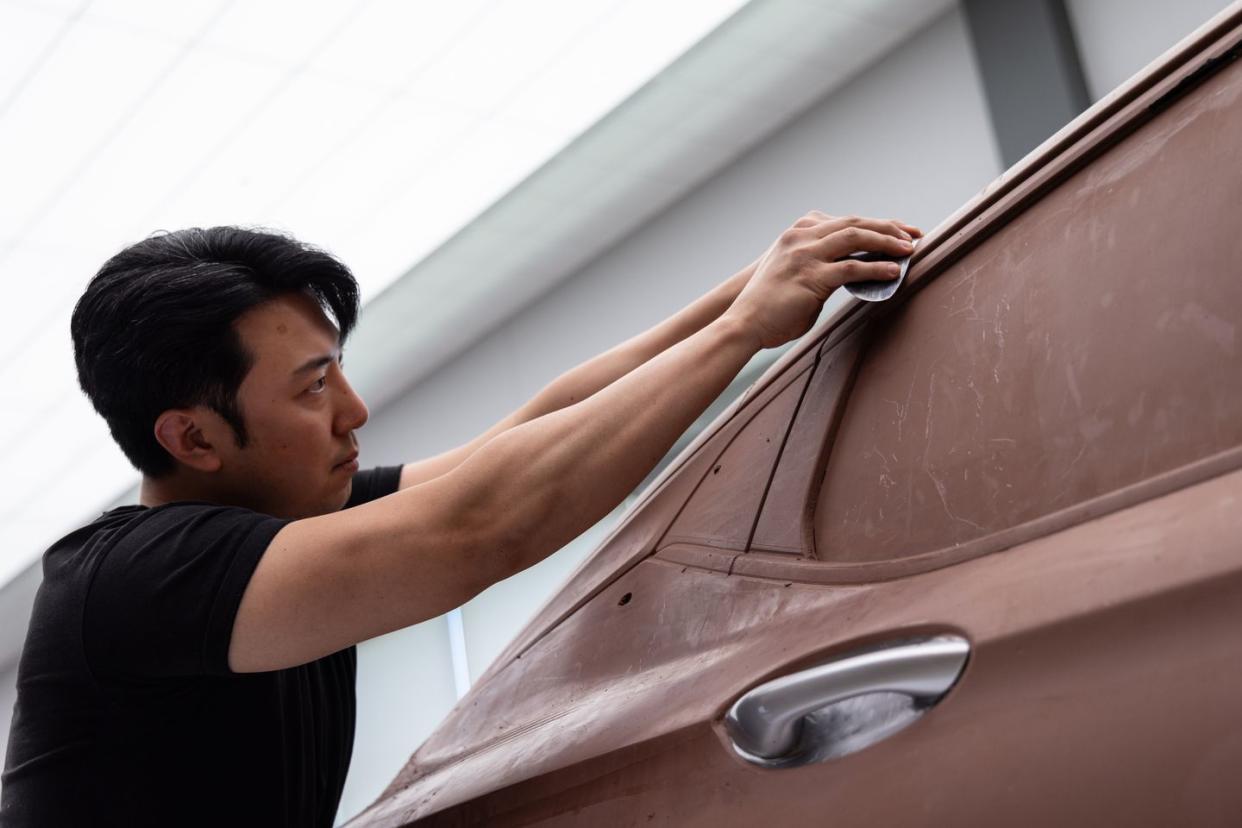
The design was soon transferred to a full-scale clay model, at which point Boniface bestowed upon it the name Wildcat, drawing inspiration from a line of 1950s concept cars, one of which, the 1954 Wildcat II, sat in Design West's lobby during our visit. Typically, the designers create three to five small-scale models before going life-sized, a process which takes just a few days. While the smaller works are handcrafted, the larger pieces are milled by huge robotic machines.
There were three SUV design studies in the studio when we attended, one of which was being carved by a mill, tiny clay shavings pilling up on the otherwise pristine studio floor as the machine cut intricate shapes into the bodywork. After the mill is finished, designers make adjustments by hand, using long strips of tape to simulate where they want the new line before shaving away or adding clay to the model. One model we saw was partially covered in a material called Di-Noc, a stretchy wrap that is applied to the clay to give a sense of how light will interact with the surfacing of the car's body. Buick's studio has a huge ceiling with more than 75 light panels that can be adjusted to create different lighting scenarios.
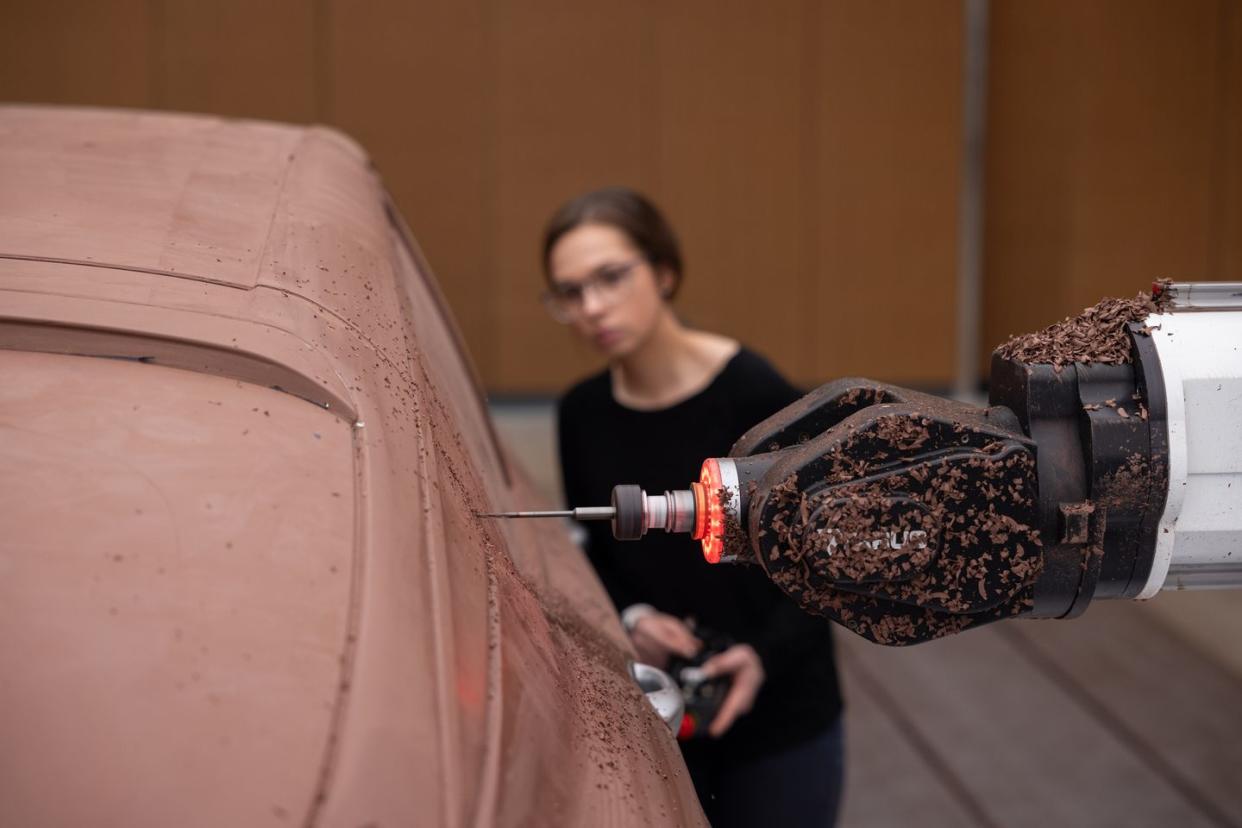
Many full-scale models the design team creates are never intended for production. Boniface estimated that well under 50 percent of the sketch-work makes it to small-scale models, with an even smaller number progressing to full-scale form and just a handful reaching dealership lots. Even the Wildcat EV concept was not originally destined to see the light of day—the clay model that resulted from that original sketch was merely meant to serve as an internal design study to inspire future projects.
But the Wildcat's sleek bodywork and ornate lighting was so appealing that GM President Mark Reuss suggested they build the concept car, Boniface explained, to show the public that Buick was serious about design. The Wildcat EV's unlikely progression from sketch to show car demonstrates how, at least at Buick, "the design direction rarely comes down from on high," Boniface said.
Instead, Buick takes a more grassroots approach, centered around experimentation and collaboration in the studio. While the Wildcat will remain a concept—despite our pleas to turn it into a stunning electric flagship—this trial-and-error attitude can affect real-world cars. The Envista originally had a more squared-off silhouette, said Boniface, like its sibling, the Chevrolet Trax. But the team messed around with some clay and sculpted a coupe-like roofline, and after the engineers gave it the go-ahead, it reached production.
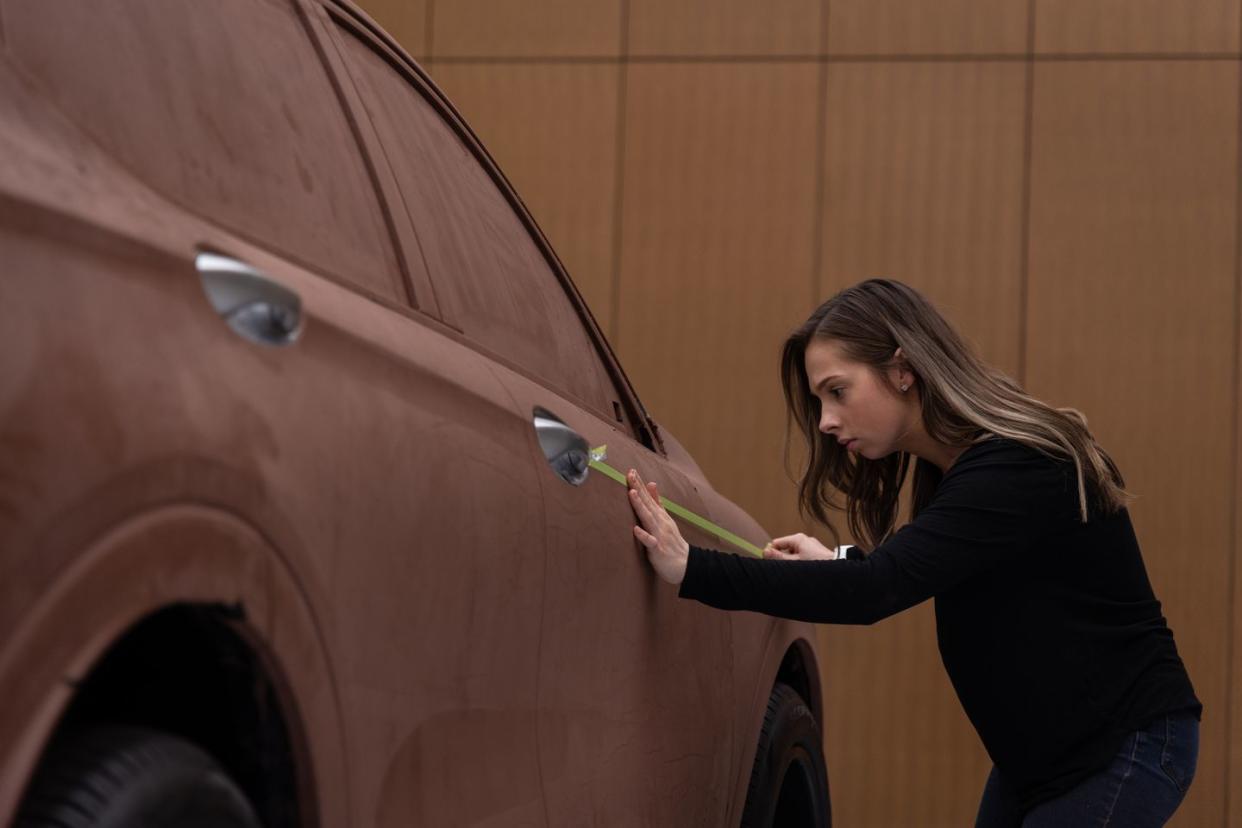
While General Motors has an advanced design studio that looks eight to 10 years into the future, the design process for most production Buicks typically begins three-and-a-half years before cars roll off the assembly line. Designing for a reality that is years away is tough, Boniface admitted. "Designers need to have a point of view," he explained. "They need to be very well informed about what the competitive landscape looks like."
The design language started by the Wildcat EV and pioneered into production with the Envista is meant to be timeless, Boniface said, by avoiding trendy details and "controlling visual mass by using surface changes, not creases." So far, this has led to a series of smooth, classy, and tranquil designs, from the Envista to the 2024 Envision and the recently revealed 2025 Enclave. They may not stand out as much as some of their competitors, but the look is resonating with Buick buyers, with the company boasting a 61 percent leap in sales in 2023. With Buick's first electric vehicle due in 2025, we're eager to see what Boniface and his team have cooked up.
You Might Also Like
